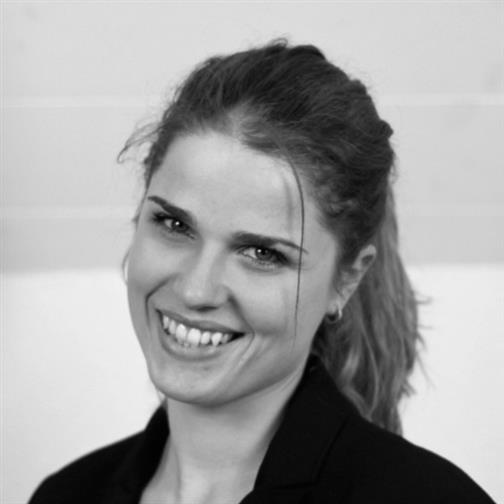This is how you can conduct a design thinking workshop in order to push innovation and introduce design thinking in a company.
Types of Workshops
Methodology Workshop: This workshop is for clients who wish to get to know the Design Thinking approach. It shows the potential of DT and allows considering implementing the process within the company.
Problem Workshop: This workshop aims to solve a specific problem which the client has not been able to solve with usual approaches. The objective is to find new approaches and create tangible results, and DT methodology is secondary.
Innovation Workshop: This is a hunt for innovative ideas in a certain subject area or product range. The specific problem is not clear yet, but a need for innovation is visible.
12 key elements of a Design Thinking workshop
The Challenge: Three criteria for a strong Challenge:
1. It allows for an open outcome
2. It is user-centered
3. It refers to a specific user group
The Multidisciplinary Team: The ideal team consists of people of different nationalities, with different occupations, and cultural backgrounds. This can include people with a background of philosophy, business studies, IT, marketing, design, or law.
The Coach: Unlike common workshops and seminars, a Design Thinking Workshop calls for more than one coach, because it relates to a team-oriented approach and the participants are put into small groups. The Lead-Coach: Planning the workshop, creating a script, choosing the right methods, and conceptualizing the necessary material. The Team-Coach: Guides a team of four to six people through actually applying Design Thinking by showing how the techniques work and what the team should pay attention to.
The Post-it: Post-its are the most essential working tool for a Design Thinking Team. They function as a visual medium which amplifies information and you can easily rearrange or cluster them. A post it can convey information on three levels: The right amount of text, Rough sketches, Color Code.
The Timer: The timer prevents time-consuming arguments and expedites the team’s results. Instructions for timeboxing:
– Split the assignment into short parts
– Use the timer from start and explain why it is beneficial to the team
– Clearly state how much time the team has for a certain activity
– Position it in clear sight for everyone
– Allow for small delays and plan your time schedule accordingly
– Use the timer consistently and interrupt any activity when the time is up
– If more time is necessary, adjust the time frame
The Team Space: The space should be flexible and easily adaptable to a variety of purposes. Each phase of the process requires a different work mode. Materials for Team Spaces: Whiteboard markers, medium-sized felt pens, post-it pads in different colors, timer, a supply of A4 paper, glue stick, roll of white masking tape.
The Share Space: The share space is where all workshop participants convene. The day starts off there and in the evening everybody comes together and shares their experiences and thoughts. Equipment for Share Spaces: seating for all participants, projector, large timer, gong.
The Prototyping Area: Depending on if it is a product, a service, or a system, different prototyping techniques can come into play. Popular techniques include role playing, prototypes made of Lego bricks, of paper, or of cardboard.
The Warmup: These are short, playful exercises for creating a positive atmosphere and strengthening ties amongst the participants. There are three different types of warm-up:
– Ice-Breaker warm-up: to loosen up the general atmosphere in the beginning of the workshop
– Team Building warm-up: to generate a sense of togetherness before working as a team
– Energizer-warm-up: after a heavy lunch when energy levels are low
The Check-in: During about 5-15 minutes the team can introduce themselves to each other, in order to get acquainted and to dispel reservations of any sorts. Each participant shares: Name, occupation, goals/Expectations, past experiences with Design Thinking, his or her secret superpower.
The Debriefing: At the end of a workshop day all participants convene for a debriefing. Everybody can share their experiences, their insights, positive impressions, and further requests. Avoid long speeches and discussions here – each person can have his or her say. There should be a time limit for this part. I like, I wish: This format is quite straightforward, but effective nonetheless. Every participant makes a statement starting with the words I like and I wish.
The Nine Rules
1. Defer judgement – clearly separate the stage of generating ideas and evaluating ideas
2. Go for quantity – many ideas are better than a few since it increases the likelihood of having ideas with great potential
3. Build on the ideas of others – this allows new ideas or variations thereof to form quickly
4. Be visual – sketches are like quick prototypes illustrating to others what you mean
5. Encourage wild ideas – especially extreme and unrealistic ideas have the potential to turn into truly new and unusual solutions
6. Stay focused – a lot of teams get trapped in arguments or get sidetracked by minor details of the original problem
7. Think user-centered – assume the position of the user and you will find the solution he needs
8. Have fun – a team that is having a good time will come up with crazy ideas and is ale to get through rough patches more easily
9. One conversation at a time – this gives space to everybody’s thoughts and ideas and every team member is up-to-date

